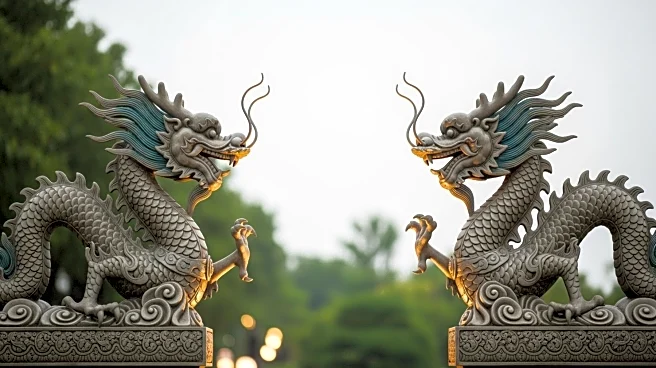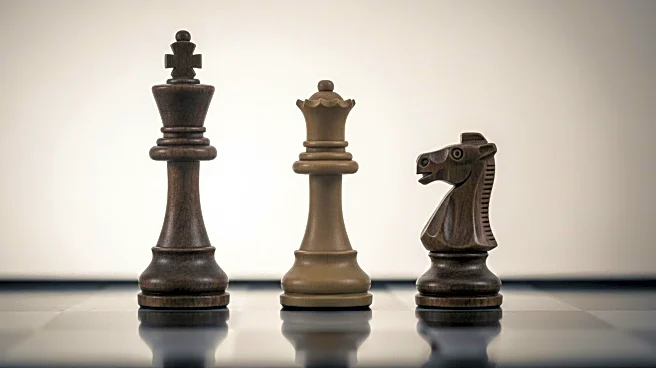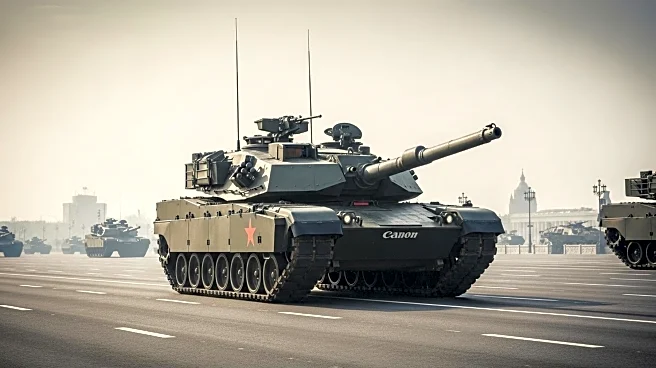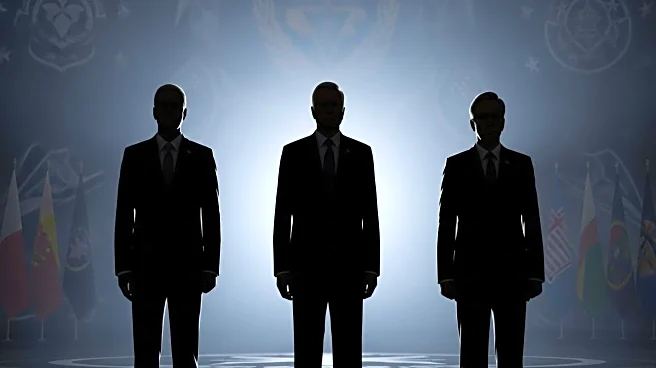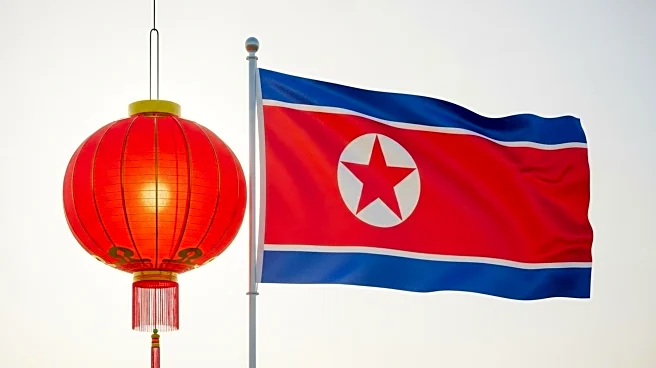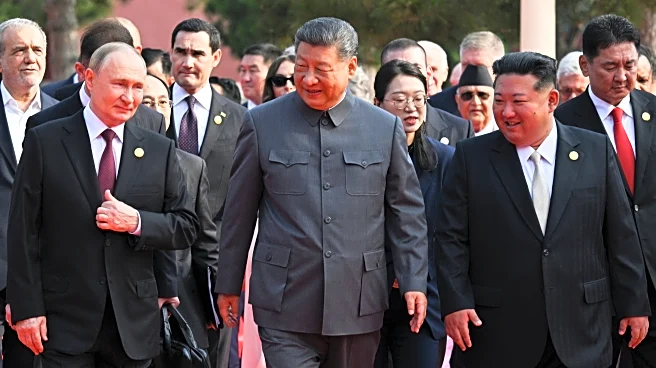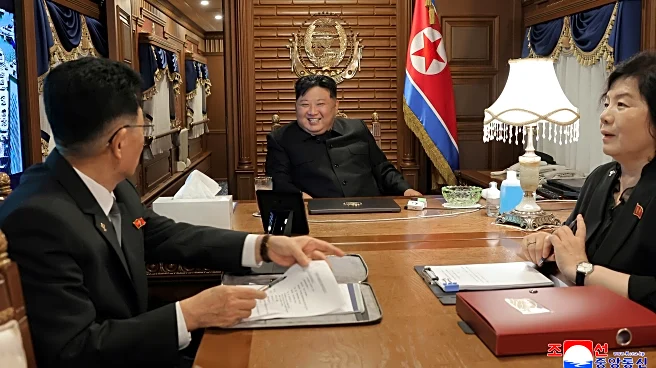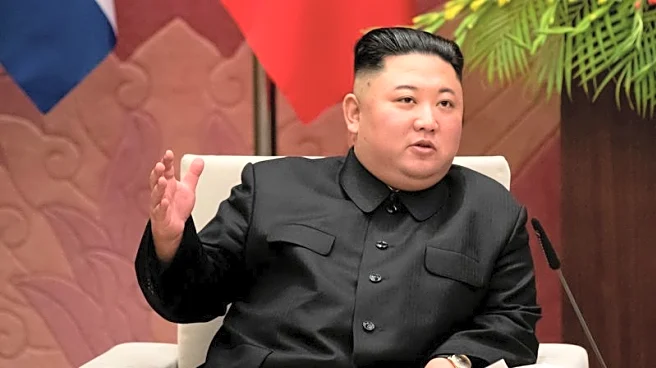What's Happening?
North Korean leader Kim Jong Un met with Chinese President Xi Jinping during events in Beijing commemorating the end of World War II. Kim attended a military parade alongside other leaders, including Russian President Vladimir Putin. This marks Kim's first visit to China in six years, and he brought his daughter, fueling speculation about her potential role as his successor. The meeting is seen as an effort to restore ties with China, North Korea's largest trading partner, amid concerns about North Korea's growing relationship with Russia.
Why It's Important?
Kim's visit to China and meeting with Xi Jinping could signal a shift in North Korea's foreign policy, potentially strengthening its ties with China. This development may impact regional stability and influence negotiations with the United States, as North Korea seeks to balance its relationships with major powers. The meeting highlights China's role as a key player in North Korean diplomacy, which could affect international efforts to address North Korea's nuclear ambitions and economic challenges.
What's Next?
The meeting may lead to increased diplomatic and economic cooperation between China and North Korea, potentially affecting regional security dynamics. Observers will watch for any agreements or initiatives that emerge from this visit, particularly concerning North Korea's nuclear program and economic development. The U.S. may need to adjust its diplomatic strategy towards North Korea, considering its strengthened ties with China. Future interactions between Kim and Xi could shape the geopolitical landscape in East Asia.
Beyond the Headlines
The meeting raises questions about the ethical implications of North Korea's authoritarian regime and its impact on regional diplomacy. The presence of Kim's daughter at the event may reflect cultural and dynastic elements in North Korean leadership, influencing its approach to international relations. The potential for increased cooperation between China and North Korea could lead to long-term shifts in regional power structures, challenging existing alliances and prompting new strategic partnerships.


